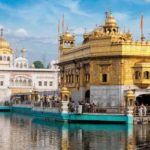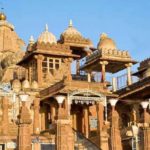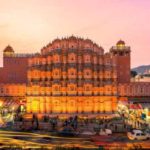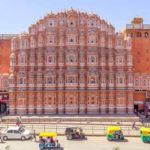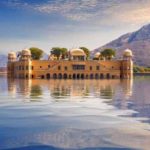Top 10 Places to Visit in Amritsar is the holiest city for Sikh pilgrims, this beautiful place in Punjab is visited by travellers of all beliefs and interests. The Golden Temple, Akal Takht, Jallianwala Bagh, and Gobindgarh Fort are famous places to visit in Amritsar. While the Old City is dotted with many historical buildings and sights including the Golden Temple to the south of Amritsar station, the north side of Amritsar features upmarket restaurants, hotels and spacious neighbourhoods, And other sparkling signs of the contemporary success of the city. Let’s look at all of the points of interest in Amritsar more closely.
The Golden Temple, undoubtedly a major highlight of all Amritsar sightseeing tours, is the Sikhs’ most important holy site and also one of India’s most impressive temples. Also known as Shri Harmandir Sahib or Darbar Sahib, one of the main attractions in Amritsar is the Golden Temple. From 6 am to 2 am the temple complex is open every day so tourists can enjoy its lovely reflections in the evening in Amrit Sarovar.
It is possible to access the two-storey structure in the middle of the sacred pool through a narrow bridge. In the designated spots in the lake, pilgrims will take a bath before they bow their heads in the temple. A gallery of paintings depicting the storeys of martyred Sikh leaders is shown at the Central Sikh Museum here. A popular dining hall (langar) serving free meals to all guests round the clock is also available at the Golden Temple.
On a trip to Amritsar, one of the popular tourist attractions in Amritsar is Jallianwala Bagh. This 6.5-acre park, located a five-minute walk from the Golden Temple, is the site of the notorious 1919 Amritsar massacre on Baisakhi Day. To this day the bullet holes in the walls can be seen by tourists. Gobindgarh Fort lies in the heart of the district, one of the newest additions to Amritsar sightseeing sites.
Travelers will head 32 km west to Wagah town after enjoying sightseeing in Amritsar. The Indian Border Protection Force (BSF) and the Pakistani Rangers conduct the Wagah Border Ceremony every evening for two hours at the border gate. Pul Kanjri is a historical site about 35 km from Amritsar where under the reign of Amritsar, structures such as a mosque, temple, and a pond were constructed Maharaja Ranjit Singh.
The Temple of Mata is a Hindu cave temple dedicated to Lal Devi, a saint. Another place of worship near Lohgarh Gate is Durgiana Temple or Sitla Mandir. Designed in the Golden Temple theme, it is also constructed in the middle of a medium-sized lake. Other famous places to visit in Amritsar city are the summer palace of Maharaja Ranjit Singh in Ram Bagh Park, the Maharaja Ranjit Singh Panorama, the Partition Museum, and Ram Tirth Top 10 Places to Visit in Amritsar.
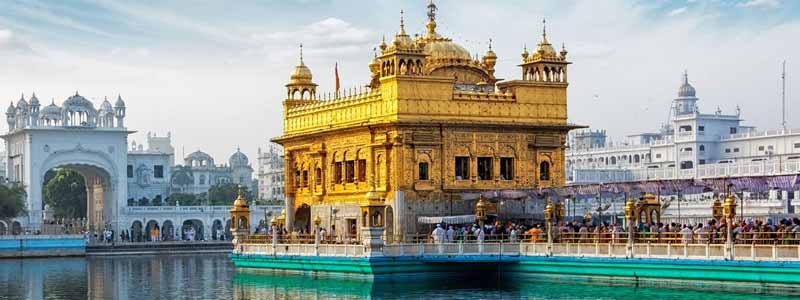
Golden Temple
Amritsar is world-famous for one of the country’s most popular holy sites, the beautiful and highly revered Golden Temple, or Sri Harmandir Sahib. The temple is a two-storey building with approximately 400 kg of pure gold leaf covering its top half, which is what gained it its English moniker. It is assumed that the building was started in the 19th century by Maharaja Ranjit Singh, the leader of the Sikh empire. The rest of the temple complex is made of white marble, embellished with colourful precious and semi-precious stones. The technique of pietra dura has been used to create motifs. In its scale, the grand temple complex is awe-inspiring.
Before entering the Golden Temple, as a show of reverence, one must cover his head and remove his/her boots. The serene spirituality of the temple soothes the soul as one listens to the beautiful notes of gurbani (spiritual songs). One can also participate in the free meal offered here at the Guru Ka Langar (community meal) to about 20,000 people every day, regardless of caste, creed or gender. Volunteers oversee the whole operation and it is one of the most humbling experiences you may have.
The temple’s architecture is impressive and the base of the structure is shaped by a 67 ft square of marble. Amrit Sarovar (pool of nectar), whose waters are said to have healing power, surrounds the glistening temple. As devotees take a dip in it, one can also see colourful fish swim in the clear blue waters of the lake. The temple was built with the fundamental principles of Sikhism in mind that advocate universal brotherhood and ethos all-inclusive. Top 10 Places to Visit in Amritsar.
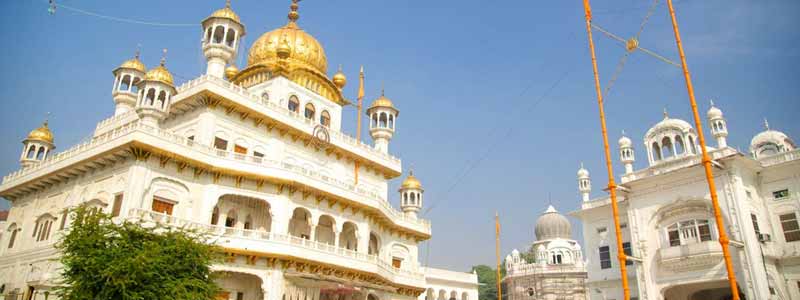
Akal Takht
Akal Takht The word ‘Akal‘ implies that Takhat means a throne (seat) where rulers, emperors used to sit, time-less (often used for Almighty-God). Akal Takhat, therefore the Seat of the Almighty.
An elevated position emerged in front of Harmandir Sahib because of the excavation of the holy pool of nectar (Amrit-Sarovar). In 1604, when Guru Granth Sahib was installed in Harmandir Sahib, it was brought to this room every night for rest. Under the cot intended for Guru Granth Sahib, Guru Arjan Dev used to rest. This room, known as Kotha Sahib, now has a day.
AKAL TAKHAT, The Sixth Sikh Master Guru Har Gobind Sahib Ji, assisted by Baba Budha Ji and Bhai Gurdas, founded the highest temporal seat of Sikhism in the year 1609. It was called Akal Takhat by the Guru (The throne of Almighty). Guru Hargobind Sahib, listening to the woes of the poor, used to hold his court. At this spot, Guru wore two swords of Miri and Piri, the worldly emperor’s robe with a turban plume, ordered the Sikhs to carry weapons, horses as an offering, and also to be a saint and a soldier. At this place, the tradition of singing ballads of war heroes with stringed instruments (Sarangi and Dhad) started.
Akal Takhat has its own rituals, i.e. the evening prayer (Rehras Sahib) and Ardas will be recited by the priest, with a naked sword in his hand. In the Golden Palanquin throughout the day, some rare weapons related to the Sikh Gurus and Sikh warriors are displayed and explained to visitors every evening.
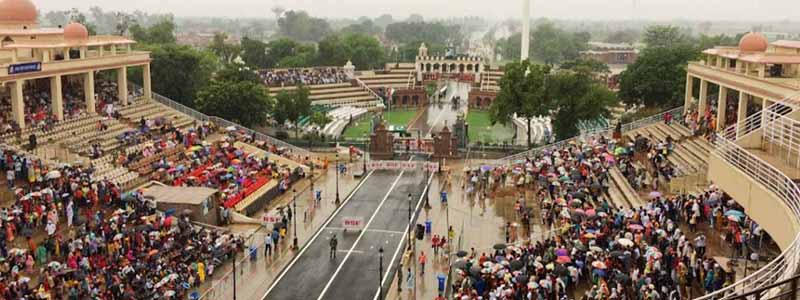
Wagah Border
At a distance of 30 km from the Amritsar Junction, the only road boundary between India and Pakistan is the Wagah Border. The frontier lies between the cities of Amritsar, India, and Lahore, Pakistan, on the Grand Trunk Road. Wagah Border, also known as the Berlin Wall of China, is the only open border officially accessible to both nations and one of the top places to visit in Amritsar.
There is an immense arch at the border called ‘Swarn Jayanti Dwar’ and the gates of both nations. Wagah is also known as Attari and is known primarily for its ‘Beating Retreat Ceremony.’ In 1959, the Beating Retreat Ceremony was initiated and the government of both countries agreed to it. It is a sign of the two countries’ rivalry. The Indian Border Security Force and Pakistan Rangers are in charge of the flag ceremony. As of July 2011, BSF women guards were also part of this ceremony. Nearly 5,000 people are visiting the border to see a ceremony of great patriotism.
The highlight of this ceremony is the simultaneous lowering of the flags of both nations. The flags are then folded and the ceremony concludes with a kind gesture in which the soldiers of both countries shake hands and the closing of the gates follows. The ritual takes place for a total of 45 minutes and is conducted before sunset. For observers, seating arrangements are allowed so that they may observe the ceremony. Through crying out ‘Jai Hind’ and ‘Vande Mataram,’ the crowd cheers on, Top 10 Places to Visit in Amritsar.
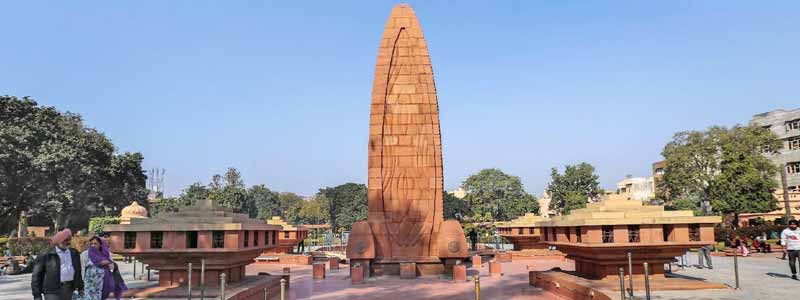
Jallianwala Bagh
This infamous garden is located near the Golden Temple, in the heart of old Amritsar city. This is the witness of the 1919 massacre of Jallianwala Bagh (or Jallianwala Bagh hatyakand, in Hindi).
Jallianwala Bagh is a public garden of 6.5 acres that has national significance. It stands as a memorial to all those who lost their lives to the infamous General Dyer during the open-fire. Get into the narrow and only entrance to the park and walk through the memorial statues, the gallery and the murderer to imagine what it might have been like that day. It’s still a spot that takes you back in time, while parts of this park have been recreated.
The walls are spotted with bullet marks and holes that tell you the storey of the tragedy that occurred on April 13, 1919. In locations, the park has history plaques to help you appreciate the historical value of each location there. The scary Martyr’s Well stands tall, too. It’s the same pit where people jumped in to keep the British soldiers’ bullets from firing like madmen.
In addition, the narrow entrance was blocked by certain soldiers to discourage individuals from fleeing the awkward ceremony.
Today, Jallianwala Bagh is a place where those martyrs, the fallen victims, are honoured. The event is commemorated by a red tower-like structure. You can remain till evening and see the monument illuminated. Sculptured bushes, in the form of armed soldiers, are often scattered among the grassy lawns and flowery shrubs.
Jallianwala Bagh houses Amar Jyoti-the flame which glows 24×7, apart from those shreds of proof. A small museum is also open. With the evening light and sound demonstration, you can get further into the massacre’s past. Every day it runs for an hour Top 10 Places to Visit in Amritsar.
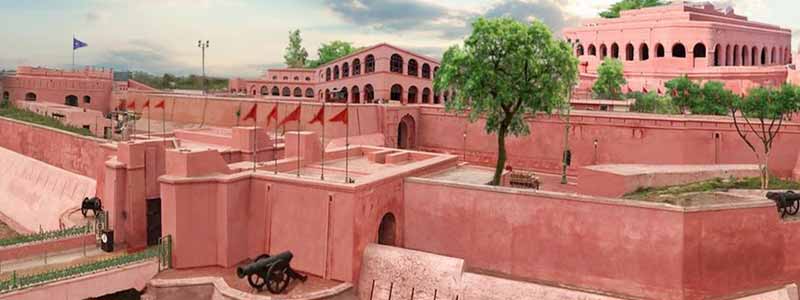
Gobindgarh Fort
The Gobindgarh Fort, the iconic defender of Amritsar, the very emblem of Punjab, is located right in the centre of the Holy City along the Grand Trunk road that stretches 43 acres of land. This magnificent heritage site has its own history, spread over a period of more than 300 years, right from the time of the Indian Army, the Bhangi Misl-Maharaja Ranjit Singh-The East India Company. Finally, this qilla opened its doors for the very first time to welcome not only the people of Punjab, but also each one of those devotees and tourists who come to Shri Harmandir Sahib to pay their respects.
The world-famous Kohinoor Diamond was once located within the fort. The qilla is now being restored in a staggered manner to eventually get it back to the times of the Maharaja to its former glory. There are many different buildings inside the fort, constructed over the span of time, some during the reign of the Maharaja, such as the Toshakhana, Khas Mahal, Bastions, Moat, Wells, Haveli, etc., some during the Company of East India, such as the Darbar Hall. During the British era, some existing structures were altered and others were partially added, such as the Anglo Sikh Bunglow. Here is a bell made in Sheffield, UK in 1863 that was made at that period in order to cast other bells.
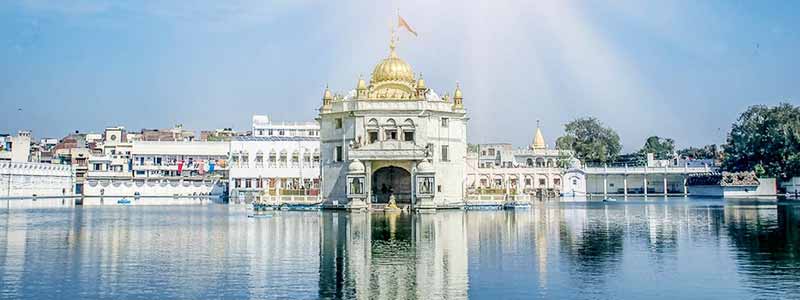
Durgiana Temple
Look at Shri Durgiana Mandir (Temple of Durgiana), and you may think you’re seeing a double. The domed building looks almost similar to the Golden Temple, with its half gold, half marble exterior. It is also located in the middle of a holy lake.
While the two temples do not vary much in appearance, they definitely have distinctive functions. Durgiana Temple is a holy Hindu site where devotees pay homage to Durga, the warrior goddess; Laksmi, the goddess of wealth; and Vishnu, the guardian of the universe. Religious travellers often visit the attraction, but even regular visitors can enjoy the magnificence of the temple’s inlaid marble and spiritual atmosphere.
Pay attention to the elegant silver doors on your way through, which depict holy figures. The distinguishing attribute is responsible for the nickname of Durgiana Temple as the Silver Temple.
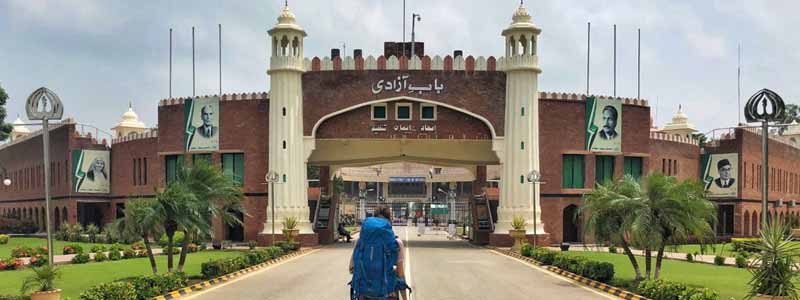
Attari Border Crossing
Millions have visited the Attari Border Crossing between the Indian city of Amritsar and the Pakistani city of Lahore, making it one of the top places to visit in Amritsar. To enter the Pakistani side, you can travel by bus.
The primary aim of this initiative is to foster peace and cooperation between the two nations. You have to bring your passport and other valid documentation to travel to the Attari Border Crossing.
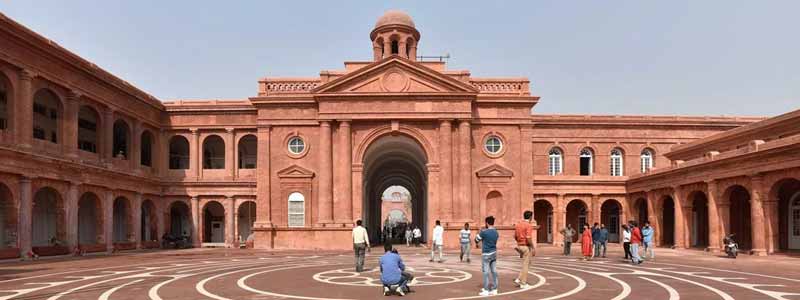
Partition Museum
For India, the year 1947 was a major one. Not only was it the year that India achieved its independence from Great Britain, it was also the year that it split into India and Pakistan, an incident known as the Partition of India, into two distinct entities.
At the Partition Museum, the only institution in the world dedicated entirely to partition, visitors in Amritsar will learn about this defining moment in history. It contains a haunting series of newspaper clippings, vintage photos, and oral storeys of individuals who have witnessed the conflict that contributed to the separation of the two nations and the relocation after the event of refugees. The experience will give you a better understanding of the source of the India-Pakistan rivalry.
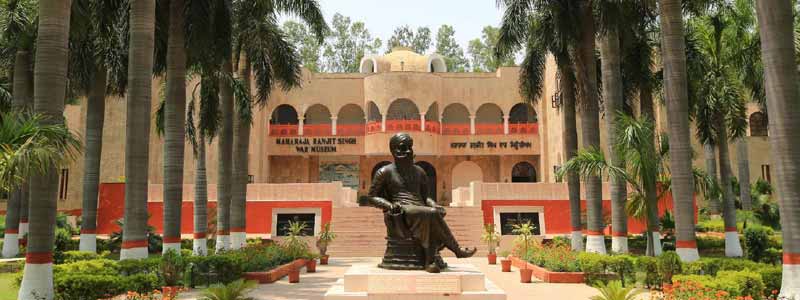
Maharaja Ranjit Singh Museum
Maharaja Ranjit Singh Museum is a famous museum situated in the middle of the beautiful Ram Bagh Garden in Amritsar, Punjab, 1.5 km from Amritsar Junction and 4 km from Amritsar Golden Temple. It is one of Punjab’s best museums and one of Amritsar’s main tourist attractions as well. The Maharaja Ranjit Singh Museum was originally the summer palace of Maharaja Ranjit Singh, the first king of the Sikh Empire. It was later turned into a museum in the year 1977 CE. It is a treasure house of the 18th and 19th century AD history, art and architecture of the Sikhs.
The museum provides insights into the life of Maharaja Ranjit Singh, the Sikh king. The Museum exhibits artefacts such as arms and armour, excellent paintings, and centuries-old coins and manuscripts related to Maharaja Ranjit Singh. The paintings shown in the museum’s galleries illustrate the king’s court and camp. Of all the paintings, the most famous is one that portrays the city of Lahore. The museum’s coins and manuscripts represent the spirit of secularism in the king’s history and the rich history of the Sikh province, respectively. The Museum’s weapons and ammunition section displays a rich selection of arms that were prevalent among the great warriors of that era. The magnificent Maharaja Ranjit Singh Panorama stands next to this museum, an everlasting visual record encapsulating the life of the Maharaja.
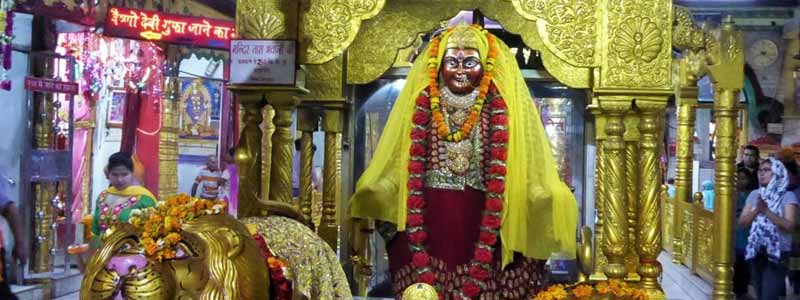
Lal Devi Mata Mandir
Mata Lal Devi Mandir is a holy Hindu temple situated in Rani Ka Bagh, Amritsar, at a distance of 1 km from the Amritsar junction and 3.5 km from Harmandir Sahib. Lal Devi Mandir is popularly known as Pujya Mata Ji and is one of the best religious places to visit in Amritsar.
The Lal Devi Mandir is dedicated to the female saint of the 20th century, Lal Devi, and was built in 1989. Mata Lal Devi Ji was born in 1923 in Kasoor in Pakistan’s Lahore district. A brahmacharni, belonging to the family of Marwaha Khatri, existed on fruit and milk. She came to Amritsar after partition, achieving nirvana in 1994. Mata Lal Devi Temple, located in Jammu and Kashmir, is a replica of the Vaishno Devi Shrine.
Lal Devi Temple, often referred to as the Mother India Temple, is regarded as full of miraculous powers and is visited by a large number of devotees from far and close, particularly women who want to have children. With the holy seat of Pujya Mata Ji in the middle, the temple houses many statues of gods and goddesses. Waterways, tunnels, stairs, and paths and even caves, the last of which leads to the main shrine, illuminate the way to the main shrine. The interior of the temple is adorned by bright mirror hallways that shine gracefully with lights Top 10 Places to Visit in Amritsar.

